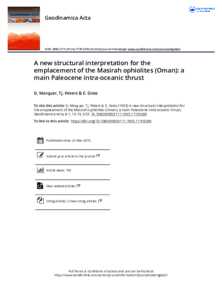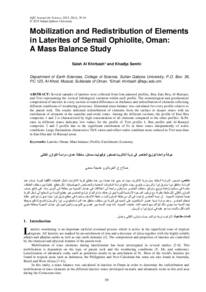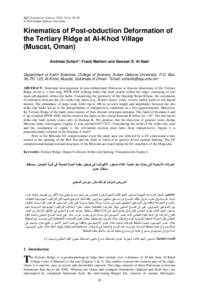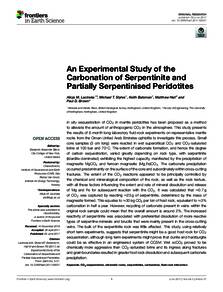Document
A new structural interpretation for the emplacement of the masirah ophiolites (Oman) : a main paleocene intra-oceanic thrust.
Identifier
DOI: 10.1080/09853111.1995.11105269
Source
Geodinamica Acta. v. 8, 1, p. 13-19
Contributors
Peters, Tj., Author
Gnos, E., Author
Country
United Kingdom.
City
England
Publisher
Taylor & Francis Ltd.
Gregorian
1995-01-01
Language
English
English abstract
As shown by geological and structural mapping, the oceanic crust of Masirah Island is composed of two nappes. South vergent folds with E-W trending axis, N-S stretching lineations and shear sense indicators are consistent with a shearing to the South of the Upper Masirah Nappe. Thrusting is bounded by late-Maastrichtian sediments below and middle Eocene shallow marine deposits which unconfor-mably overlie the nappe pile. The nappe pile and the Tertiary sediments were strongly affected by extensional tectonics resulting in NNE-SSW trending horst and graben systems, resulting, from N-S to NE-SW normal faults. These large scale structures are cross-cut by late E-W normal faults. The so-called “mélangezone” results from of the interferenc between late normal faults and the flat lyingplane of the Main Masirah Thrust (MMT) and does not represent a major transform fault as previously assumed.
ISSN
0985-3111
Category
Journal articles




